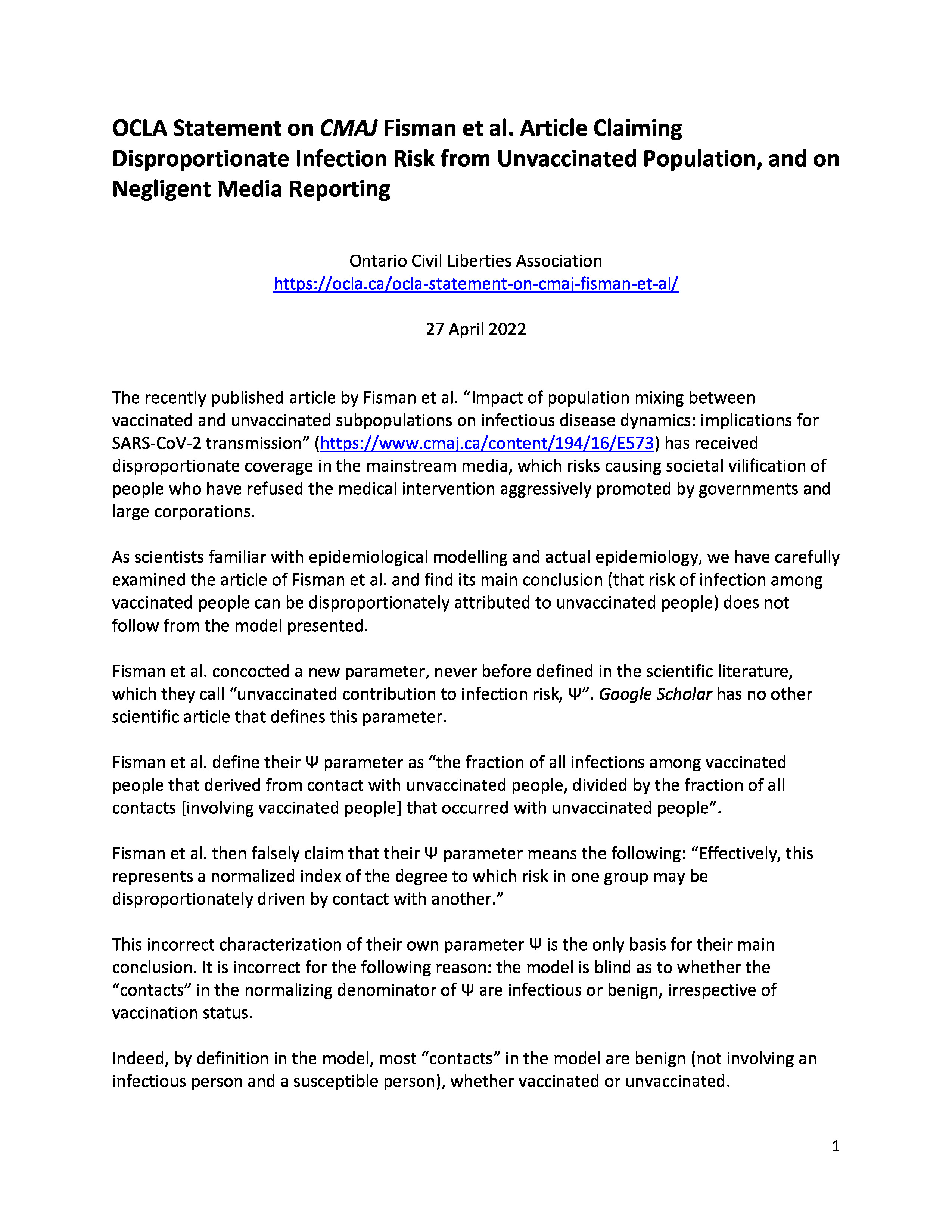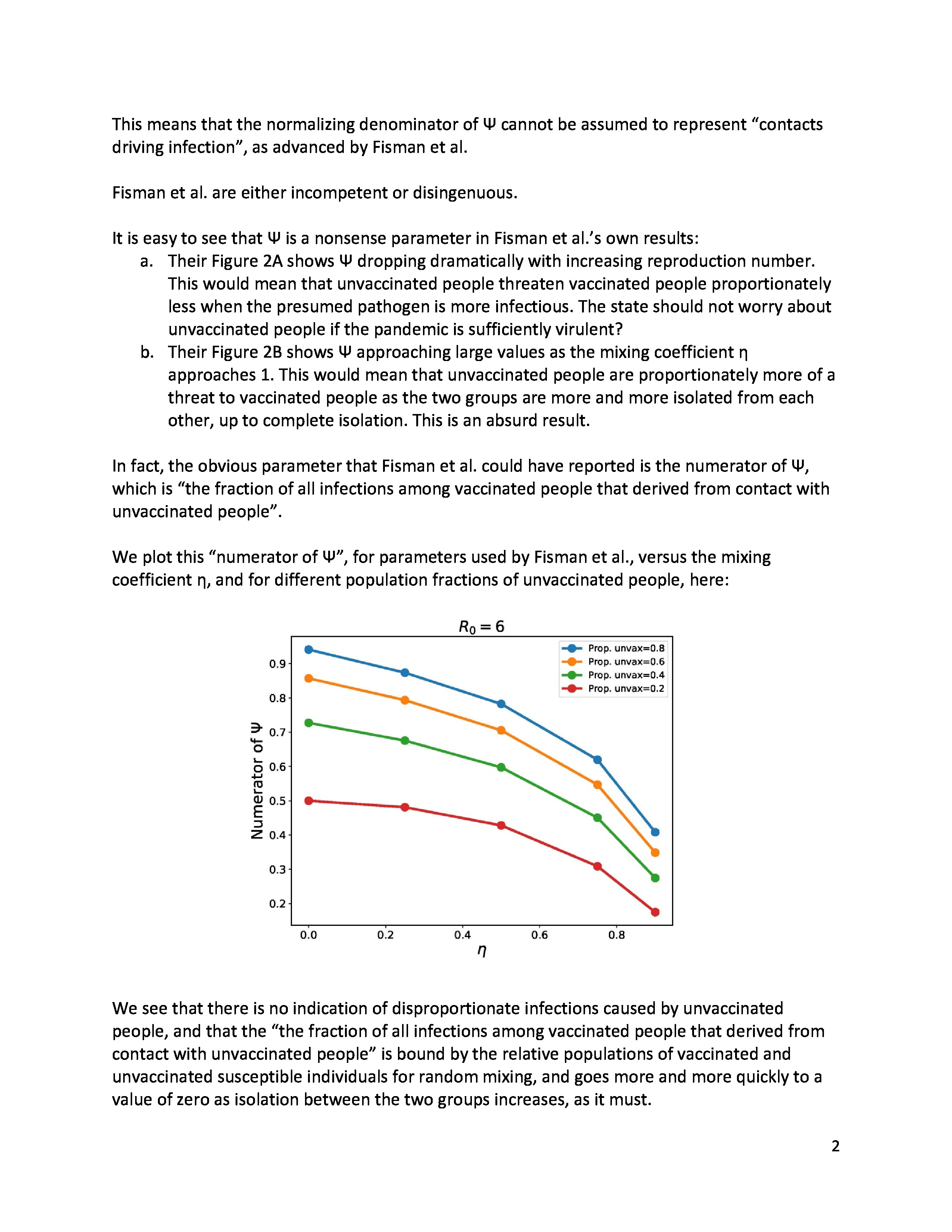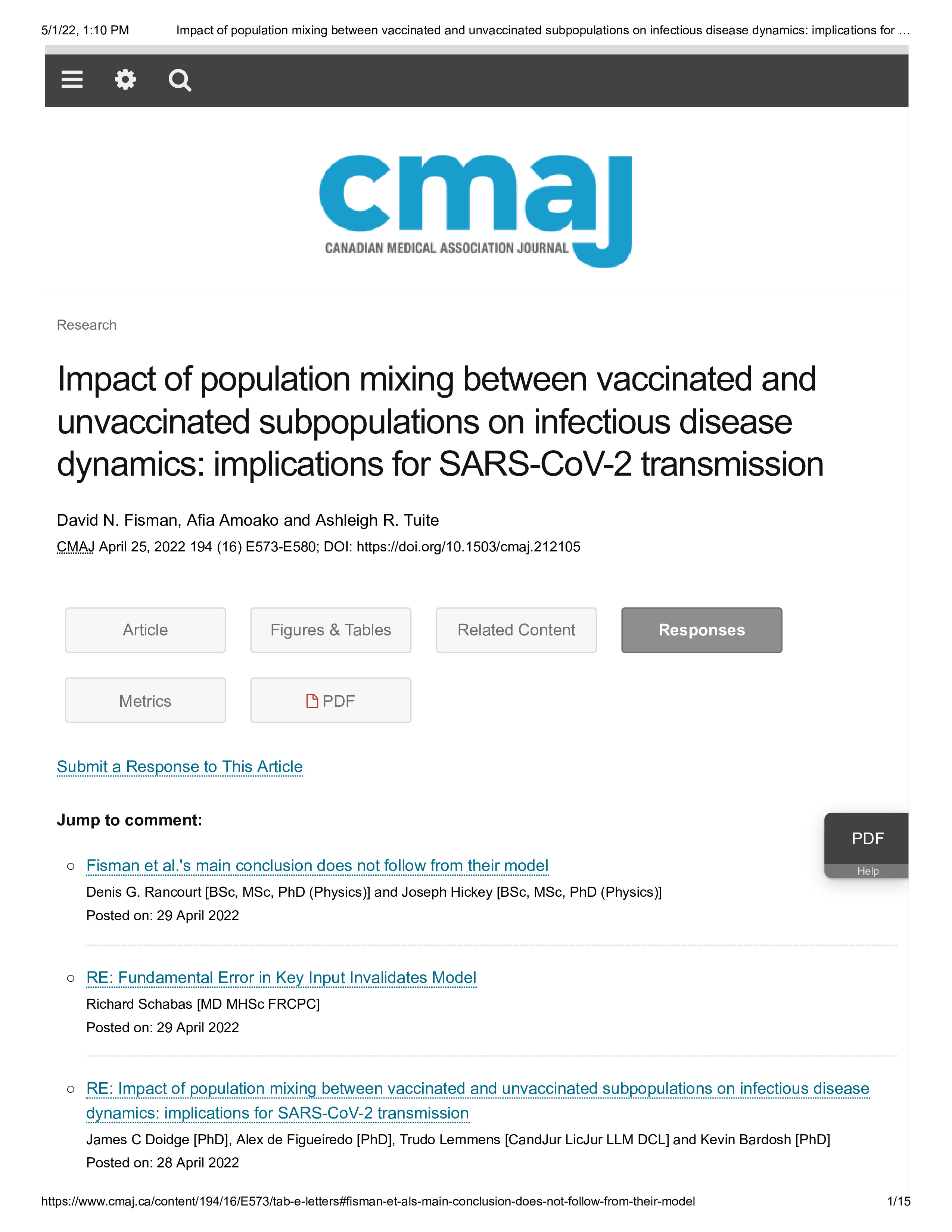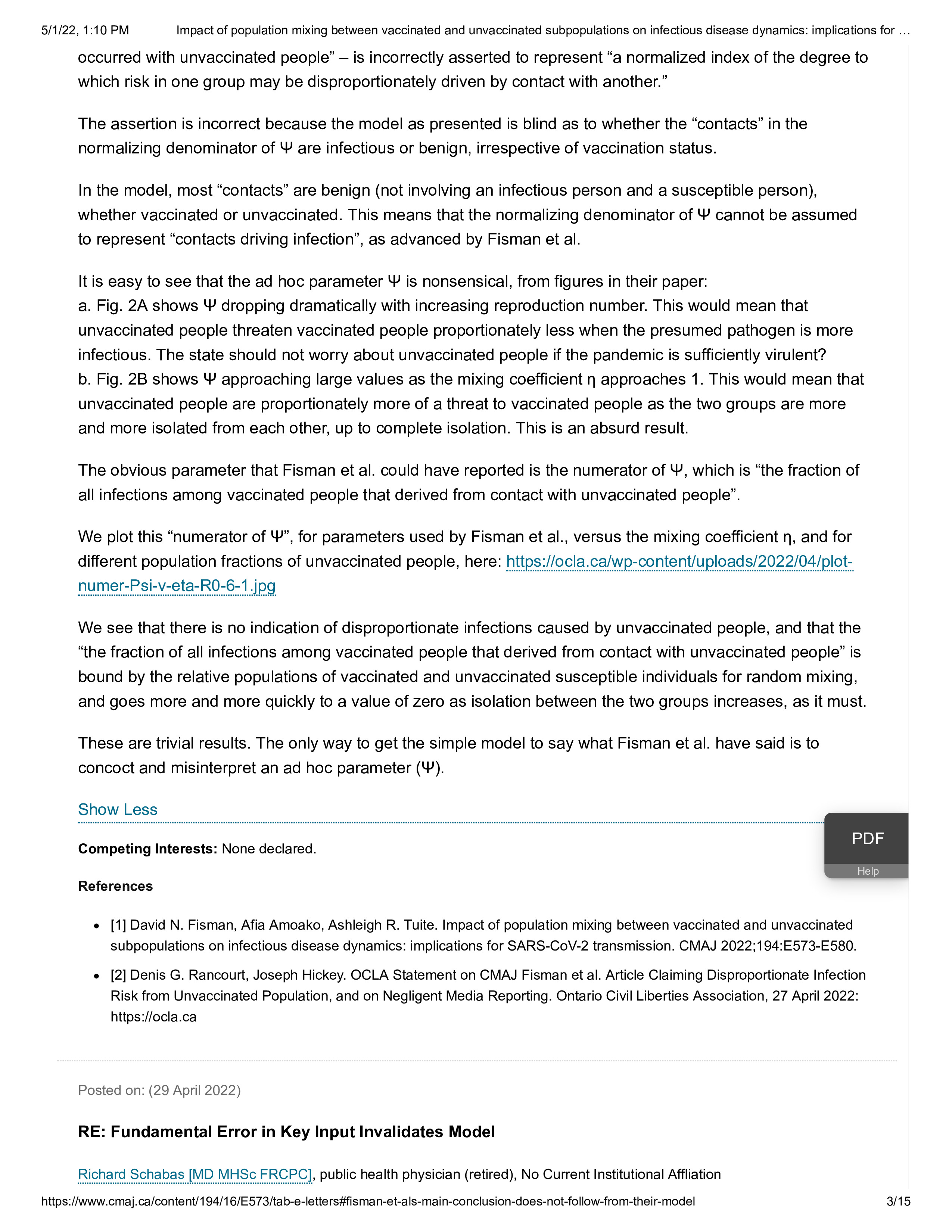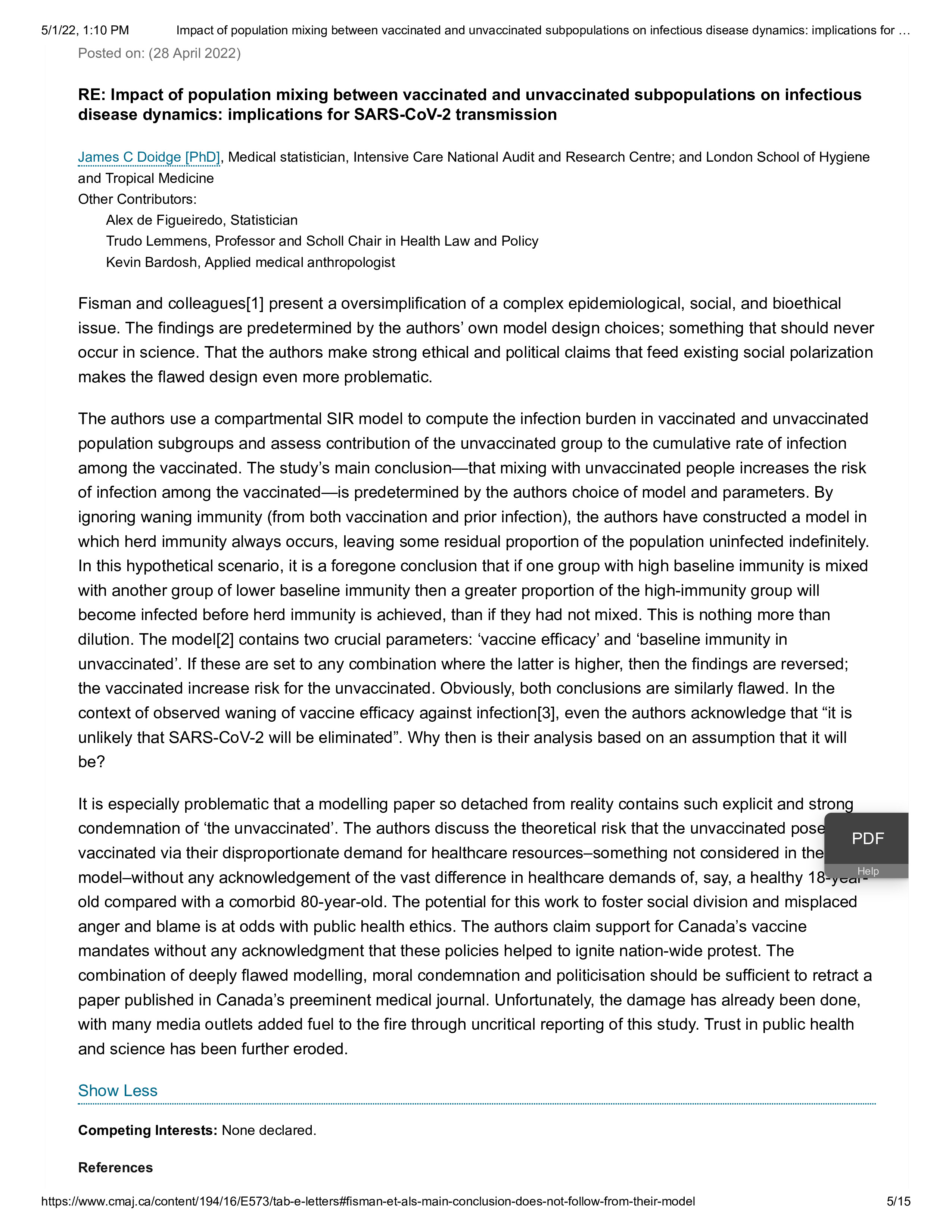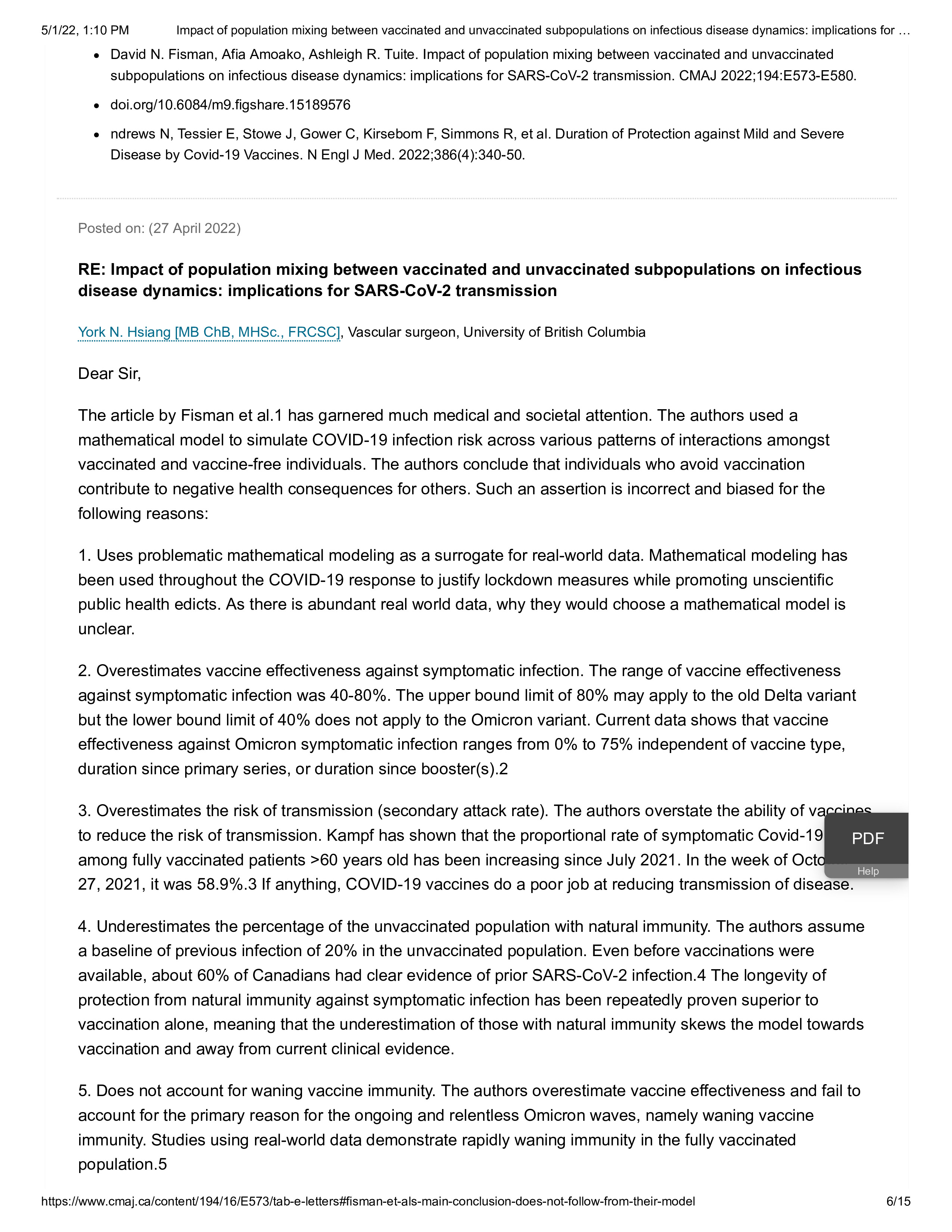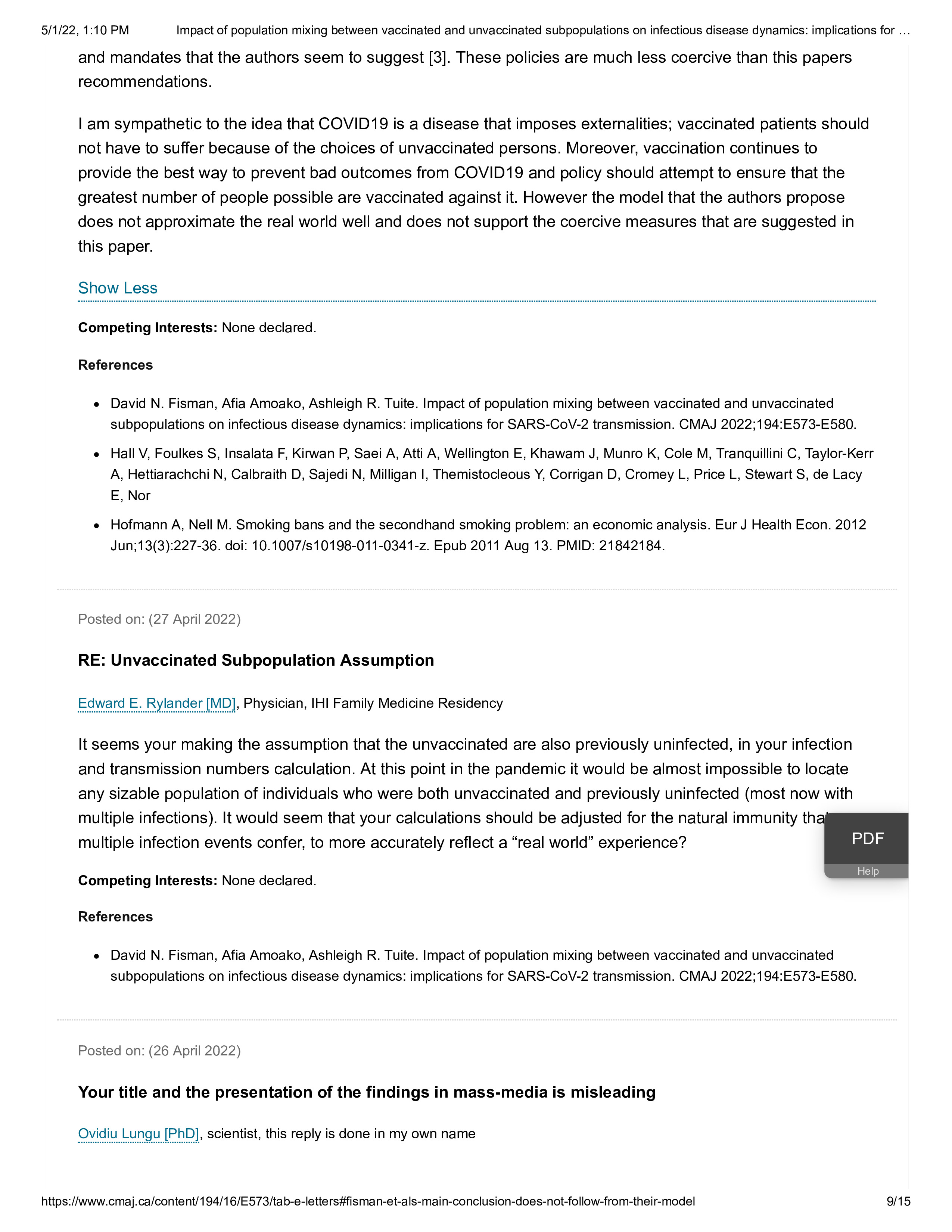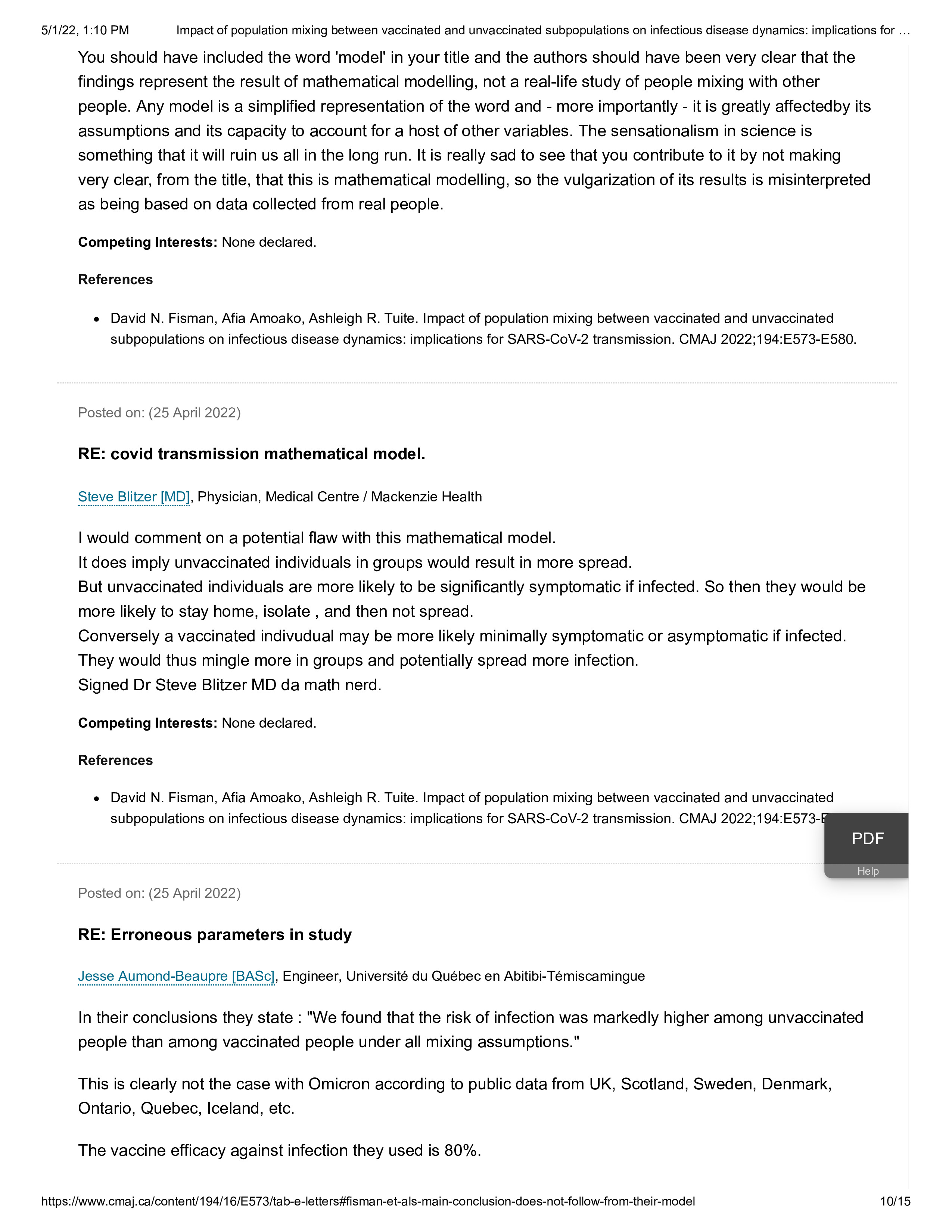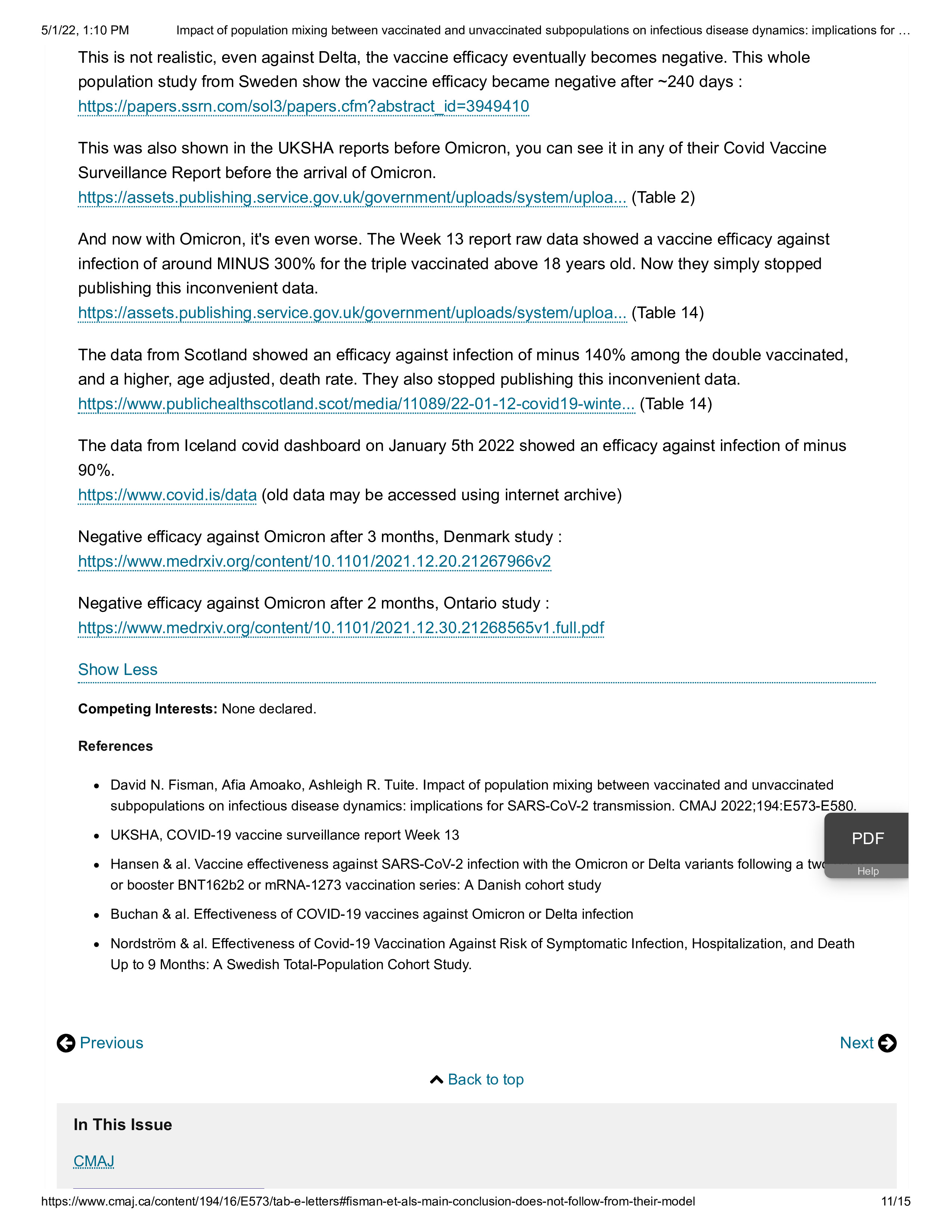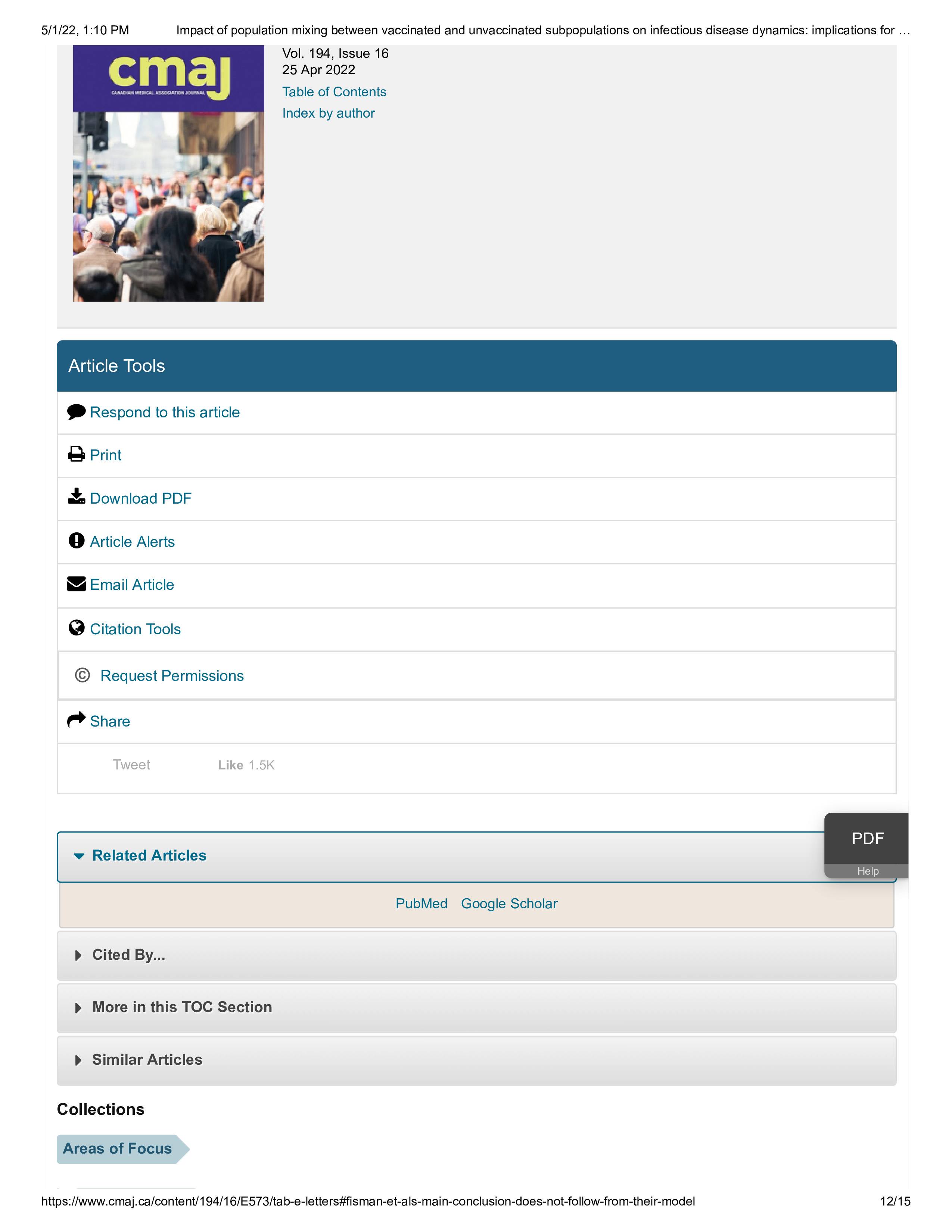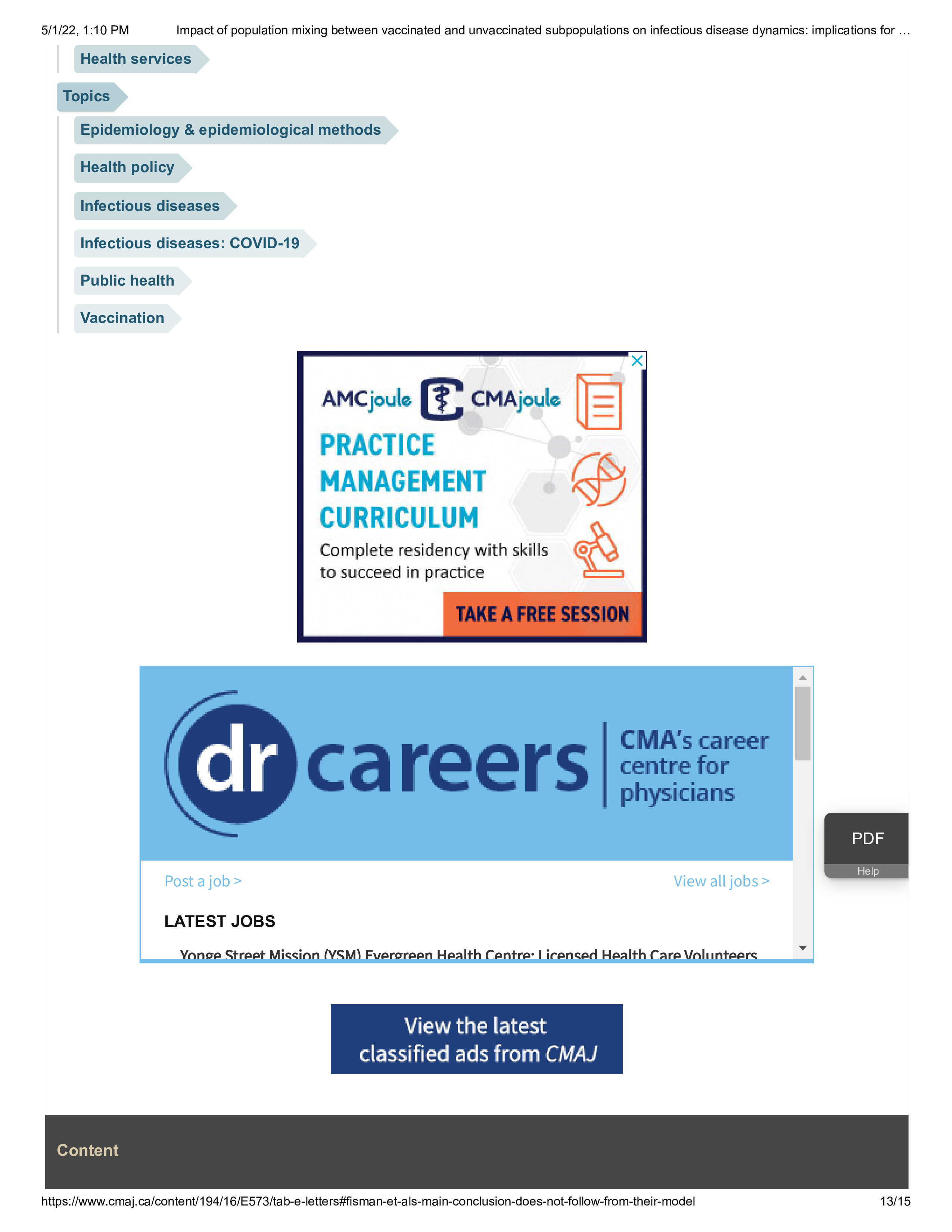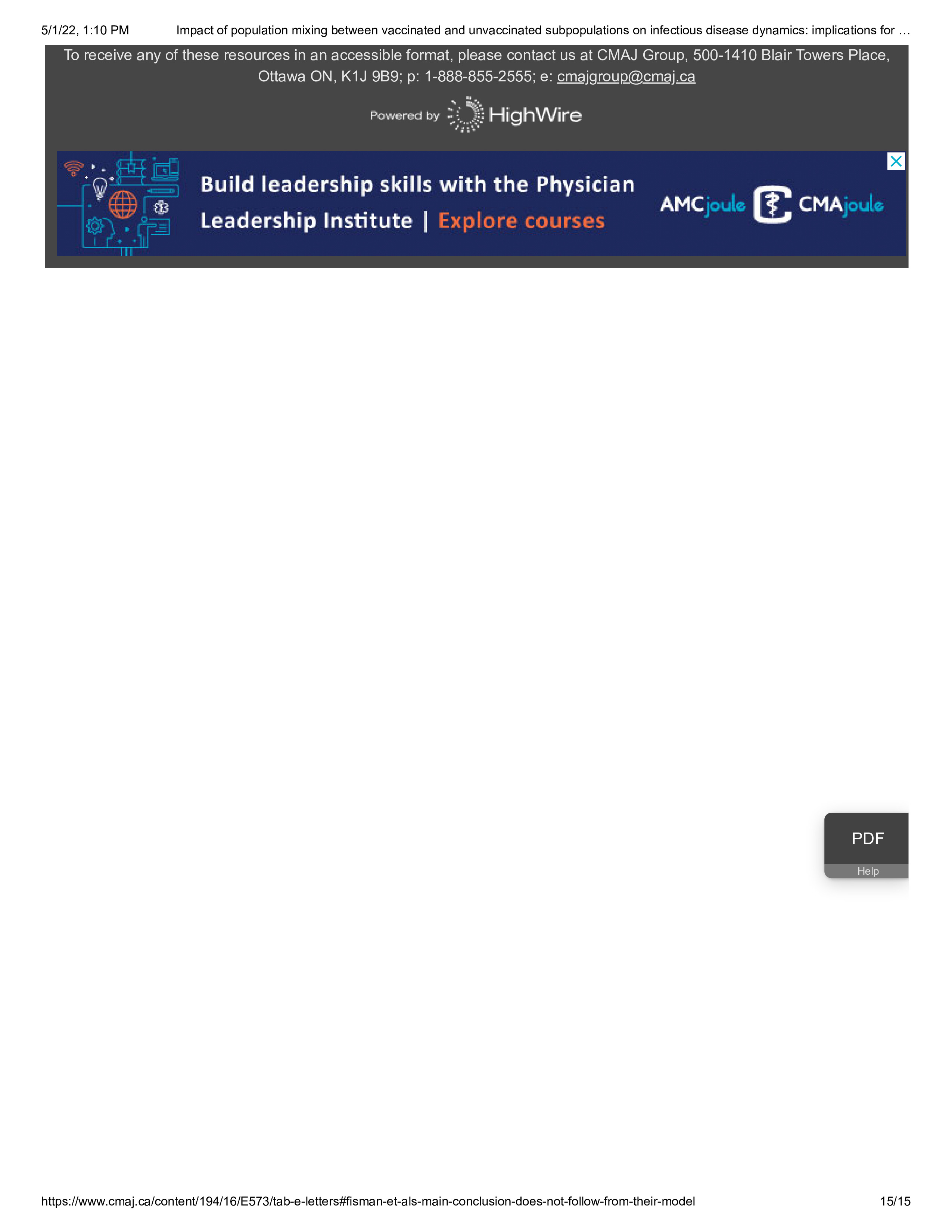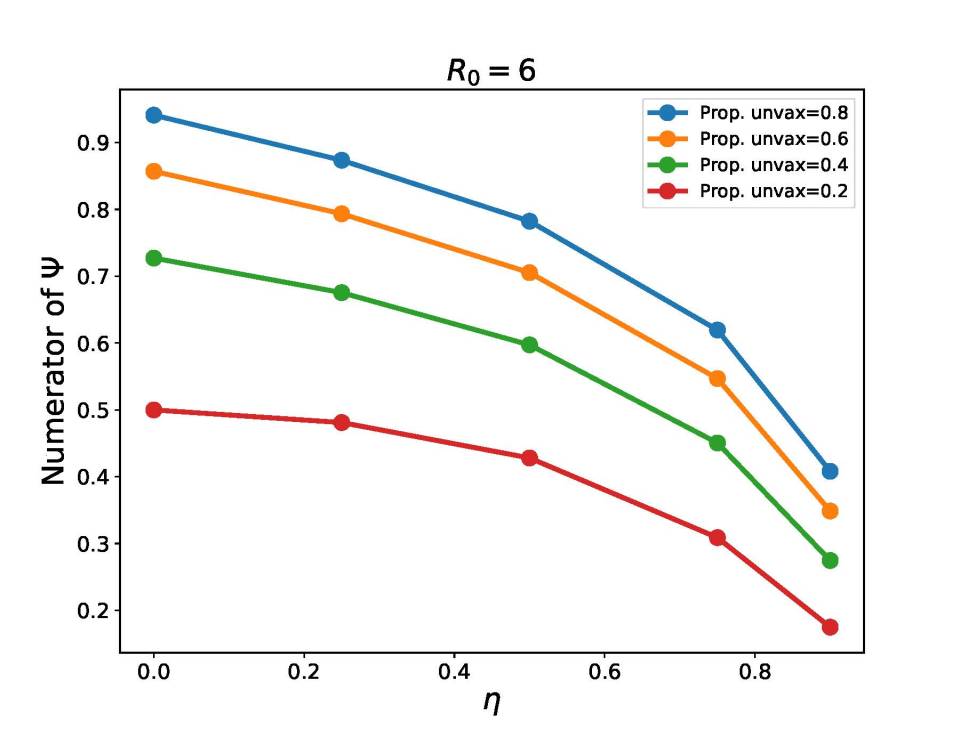
Denis Rancourt, PhD and Joseph Hickey, PhD
Ontario Civil Liberties Association
https://ocla.ca/ocla-statement-on-cmaj-fisman-et-al/
27 April 2022
The recently published article by Fisman et al. “Impact of population mixing between vaccinated and unvaccinated subpopulations on infectious disease dynamics: implications for SARS-CoV-2 transmission” (https://www.cmaj.ca/content/194/16/E573) has received disproportionate coverage in the mainstream media, which risks causing societal vilification of people who have refused the medical intervention aggressively promoted by governments and large corporations.
As scientists familiar with epidemiological modelling and actual epidemiology, we have carefully examined the article of Fisman et al. and find its main conclusion (that risk of infection among vaccinated people can be disproportionately attributed to unvaccinated people) does not follow from the model presented.
Fisman et al. concocted a new parameter, never before defined in the scientific literature, which they call “unvaccinated contribution to infection risk, Ψ”. Google Scholar has no other scientific article that defines this parameter.
Fisman et al. define their Ψ parameter as “the fraction of all infections among vaccinated people that derived from contact with unvaccinated people, divided by the fraction of all contacts [involving vaccinated people] that occurred with unvaccinated people”.
Fisman et al. then falsely claim that their Ψ parameter means the following: “Effectively, this represents a normalized index of the degree to which risk in one group may be disproportionately driven by contact with another.”
This incorrect characterization of their own parameter Ψ is the only basis for their main conclusion. It is incorrect for the following reason: the model is blind as to whether the “contacts” in the normalizing denominator of Ψ are infectious or benign, irrespective of vaccination status.
Indeed, by definition in the model, most “contacts” in the model are benign (not involving an infectious person and a susceptible person), whether vaccinated or unvaccinated.
This means that the normalizing denominator of Ψ cannot be assumed to represent “contacts driving infection”, as advanced by Fisman et al.
Fisman et al. are either incompetent or disingenuous.
It is easy to see that Ψ is a nonsense parameter in Fisman et al.’s own results:
In fact, the obvious parameter that Fisman et al. could have reported is the numerator of Ψ, which is “the fraction of all infections among vaccinated people that derived from contact with unvaccinated people”.
We plot this “numerator of Ψ”, for parameters used by Fisman et al., versus the mixing coefficient η, and for different population fractions of unvaccinated people, here (see figure above).
We see that there is no indication of disproportionate infections caused by unvaccinated people, and that the “the fraction of all infections among vaccinated people that derived from contact with unvaccinated people” is bound by the relative populations of vaccinated and unvaccinated susceptible individuals for random mixing, and goes more and more quickly to a value of zero as isolation between the two groups increases, as it must.
These are trivial results. The only way to get the simple model to say anything else is to concoct and misinterpret an ad hoc parameter.
We refrain from saying much about how distant the model actually is from reality, except to point out that Fisman et al. did not use the most relevant work of Singanayagam et al. (https://www.thelancet.com/journals/laninf/article/PIIS1473-3099(21)00648-4/fulltext) whose detailed empirical study of transmission with the Delta variant shows the vaccine inefficiency value of 0.2 used by Fisman et al. to be incorrect. Singanayagam et al. find “The secondary attack rate in household contacts exposed to the delta variant was 25% (95% CI 18–33) for fully vaccinated individuals compared with 38% (24–53) in unvaccinated individuals”, which corresponds to a vaccine inefficiency of 25%/38% = 0.66. Fisman et al. did not cite the paper of Singanayagam et al., which was peer-review published 29 October 2021.
Finally, we are obliged to comment on the negligent media frenzy that ensued.
There is no way that a journalist could critically evaluate the subterfuge inherent in the parameter Ψ. Therefore, they should have recognized their limits and sought expert counter opinions before participating in their mobbing of unvaccinated people, especially since the Competing Interests statement has: “David Fisman has served on advisory boards related to influenza and SARS-CoV-2 vaccines for Seqirus, Pfizer, AstraZeneca and Sanofi-Pasteur Vaccines …”
Likewise, one has to wonder how the competent anonymous reviewers at the Canadian Medical Association Journal (CMAJ) managed not to question the use and meaning of the unusual parameter Ψ.
Denis Rancourt, PhD
Joseph Hickey, PhD
